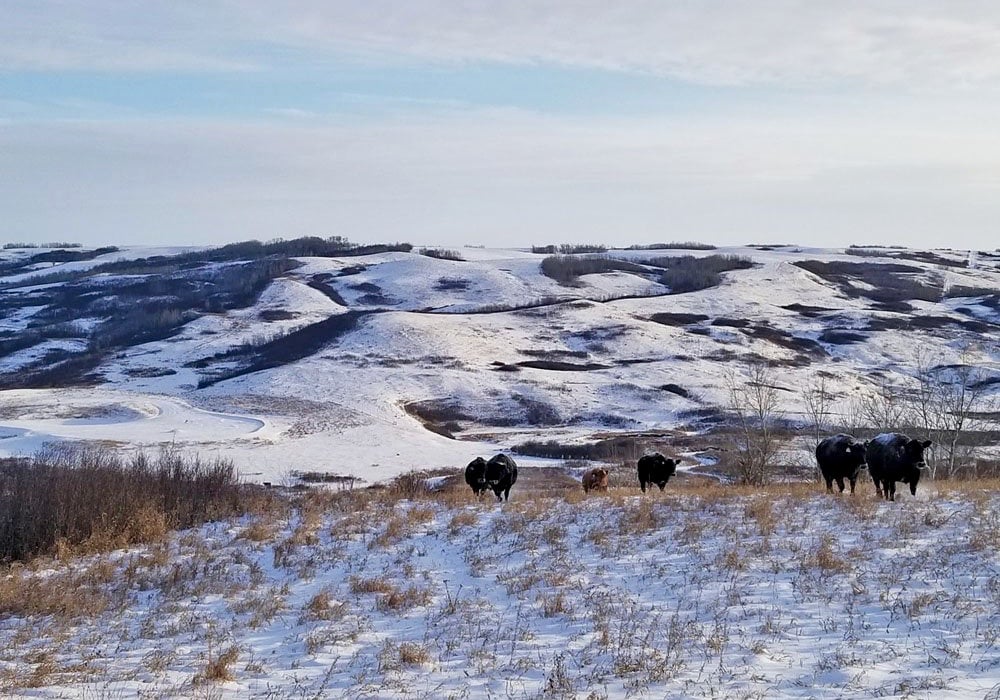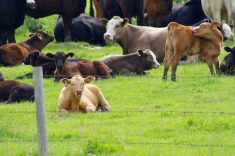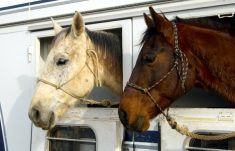Manitoba hog producers battling porcine epidemic diarrhea virus (PEDv) aren’t out of the woods yet — but the situation has shown that biosecurity measures are effective.
“We had not had any positive cases since July 14, but yesterday, one infected premises was confirmed positive based on samples collected from pigs,” Manitoba’s acting chief veterinary officer Glen Duizer said in an Aug. 10 town hall meeting.
The pigs had been previously infected with PEDv, but had recovered and tested negative before being moved to a new premise in the existing ‘buffer area’ of at-risk farms in southeastern Manitoba.
Read Also

Horns aren’t unlocking anytime soon on livestock transport standards
Standards good enough meet the definition of “humane” animal transportation still vary widely between what what industry wants, what animal rights advocates want and, between the two, what federal regulators decide is good enough.
“That same group of pigs have not exhibited any clinical signs, but has had some positive tests that suggest that they are shedding (the virus) again,” said Duizer. “We’re doing some further diagnostic work and working with the owners to sort out implications of this.”
As of Aug. 9, Manitoba had 61 infected premises — 22 infected sow herds, 13 nurseries, and 26 finishers.
“There are still approximately 117,000 sows under test and approximately 67,000 sows on infected premises. We’re working very hard to keep the disease geographically contained.”
Because of the large number of at-risk animals, some movement of animals within the buffer area is a necessary evil, said Duizer.
“We simply need the space in order to handle some of these pigs,” he said. “As much as possible, we are working with the producers and the companies involved to do biosecure routing and ongoing monitoring at sites to ensure that, if anything flags positive, we find it.”
In most cases, that means moving recovered pigs or uninfected piglets to previously positive barns that are now clean or to a negative barn within the buffer area.
“When we have to move pigs to a previously negative premises, we are trying to make sure they are non-shedding by agreed-upon criteria and we are conducting monitoring after it happens to ensure that, if they do break, we catch them right away,” said Duizer.
But in the case of the most recent positive test, those protocols failed, he added.
“We’ve been working on some baseline statuses that say there’s some confidence that these movements will not transfer the disease. We had been working off of 35 days post-clinical signs with two consecutive negative tests on pigs prior to movement. That’s not declaring the site negative. That is simply declaring the site capable of producing non-shedding pigs.
“As a result of yesterday’s case, we probably will tweak that a little bit further.”
To date, five premises have received pigs under those protocols, but it’s too early to say whether those barns will become positive as well.
“They themselves are undergoing ongoing monitoring after receiving the pigs, and as much as possible, we will keep surveillance in place to follow up with what those premises are doing.”
Biosecurity protocols
Despite this latest positive test, Duizer is pleased with how successful these increased biosecurity protocols have been at “containing it within a limited number of areas so far.”
“The bulk of our infected cases on the tail end of this outbreak have been direct animal movements and not biosecurity breaches,” he said. “Those direct animal movements are things that had to happen in order to simply try to keep flow moving and avoid euthanizing large numbers of otherwise healthy pigs that just have no place to go.
“I think that underscores some of the success that we’ve had.”
The willingness of at-risk farms to implement “short-term biosecurity protocol changes” has helped limit the spread of the disease, he added. Those protocols include limiting the use of shared staff, focusing on key contact points, disinfecting barns and trucks, and managing animal movement.
“When we’ve seen farms implement an aggressive outbreak-based biosecurity response — and we’re not saying that those need to be implemented 24-7 for the rest of the farm’s life — it appears to be effective.”
And the quicker these protocol changes are made, the better.
“The most successful farms were the ones that implemented that within the first week of the outbreak. They were very quick on ramping up their biosecurity,” said Duizer.
That’s where emergency plans come in, he added.
“You need an idea of how you can implement things very, very quickly,” he said.
“One of the struggles we’ve seen here is the issue of how quickly any operation can implement a ramped-up biosecurity protocol because they’re now in the high-risk buffer area, or, if they have the disease, how quickly they can implement an elimination or control protocol to contain the disease.
“Those plans will play a big role in preventing farms from either spreading the disease or contracting the disease in a high-risk area.”















